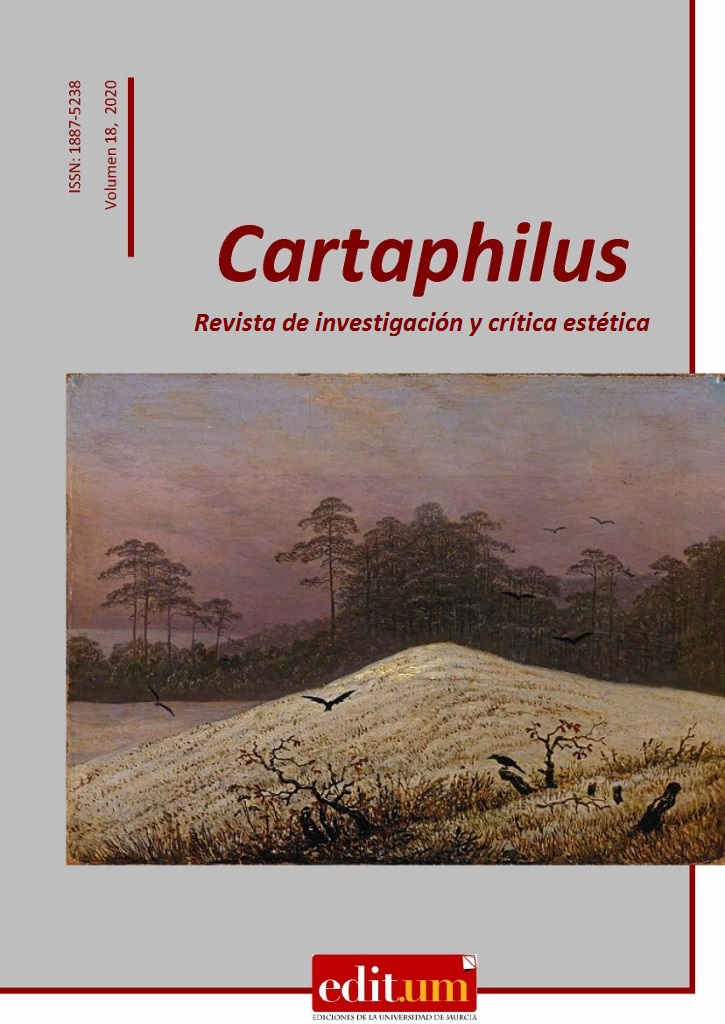El romanticismo en la narrativa breve norteamericana
Resumen
El Romanticismo fue un movimiento extremadamente influyente que surgió a finales del siglo 18 y que tuvo un gran impacto en varias áreas, incluida la literatura. Innumerables escritores han representado en sus obras características esenciales del Romanticismo como la representación de horror y emociones intensas, el uso de entornos naturales exóticos y salvajes, el nacionalismo, el individualismo, la mente humana, y el simbolismo, entre muchas otras. En este artículo, se muestra cómo el Romanticismo influyó, en concreto, la narrativa breve norteamericana analizando cinco obras: “Rip Van Winkle,” de Washington Irving; “The Minister’s Black Veil,” de Nathaniel Hawthorne; “Bartleby, the Scrivener,” de Herman Melville; y “The Minister’s Black Veil” y “The Tell-Tale Heart,” de Edgar Allan Poe. Los resultados que se han obtenido de este análisis han demostrado que estas cinco historias breves se pueden considerar trabajos románticos porque reflejan múltiples características del Romanticismo. De hecho, estos autores retratan las peculiaridades de los dos sub-campos más importantes del Romanticismo Americano conocidos como “Romanticismo Claro” y “Romanticismo Oscuro.”
Descargas
-
Resumen2293
-
pdf 1142
Citas
Almahameed, A., Almahameed, N., Rabea, R., & Alshamare, I. (2018). Death Portrayals in Edgar Allan Poe’s “The Masque of the Red Death”: A Transtextual Study in Relation to the Holy Qur’an and Arabic Literary Heritage. Advances in Language and Literary Studies, 9(5), 84-91. http://dx.doi.org/10.7575/aiac.alls.v.9n.5p.84
Barnett, L. (1974). Bartleby as Alienated Worker. Studies in Short Fiction, 11(4), 379-385.
Bysshe, W. (1955). The Parable of the Antichrist in “The Minister's Black Veil.” American Literature, 27(3), 386-392.
Carnochan, W. (1969). “The Ministers Black Veil:” Symbol, Meaning, and the Context of Hawthorne’s Art. Nineteenth-Century Fiction, 24(2), 182–192. https://doi.org/10.2307/2932603
Charvat, W. (1937) American Romanticism and the Depression of 1837. Science & Society, 2(1), 67-82.
Dinçer, F. (2010). The Light and Dark Romantic Features in Irving, Hawthorne and Poe. Journal of International Social Research, 3(10), 218-224.
Hawthorne, "The Minister's Black Veil." Retieved June 19, 2020, from andromeda.rutgers.edu/~jlynch/Texts/ministersblackveil.html
Jackson, V. (2016). American Romanticism, Again. Studies in Romanticism, 55 (3), 319-346.
Kachur, R. (2008). Buried in the Bedroom: Bearing Witness to Incest in Poe’s “The Tell-Tale Heart.” Mosaic: An Interdisciplinary Critical Journal, 41(1), 43-49.
Martin, T. (1959). Rip, Ichabod, and the American Imagination. American Literature, 31(2), 137-149. doi:10.2307/2922559
McKay, D. (1970, January 1). Rip Van Winkle: Irving, Washington, 1783-1859: Free Download, Borrow, and Streaming. Internet Archive. archive.org/details/ripvanwinkle00irvi/page/64
Nelson, S., & Nelson, C. (2018, October 6). Bartleby, the Scrivener: A Story of Wall-Street. Gutenberg. www.gutenberg.org/cache/epub/11231/pg11231.html
Saunders, J. (2012). Hawthorne’s Theory of Mind: An Evolutionary Psychological Approach to “The Minister's Black Veil.” Style, 46(3-4), 420-438.
The Masque of the Red Death. Retrieved June 2, 2020, from xroads.virginia.edu/~hyper/poe/masque.html
The Tell-Tale Heart by Edgar Allan Poe. Retrieved June 2, from, xroads.virginia.edu/~hyper/poe/telltale.html
Vanderbilt, K. (1968). Art and Nature in ”The Masque of the Red Death.” Nineteenth-Century Fiction, 22(4), 379–389. https://doi.org/10.2307/2932530
Wyman, S. (2010). Washington Irving’s Rip Van Winkle: A Dangerous Critique of a New Nation. ANQ: A Quarterly Journal of Short Articles, Notes, and Reviews, 23(4), 216-222. https://doi.org/10.1080/0895769X.2010.517049
Zimmerman, B. (1992). “Moral Insanity” or Paranoid Schizophrenia: Poe’s “The Tell-Tale Heart.” Mosaic: An Interdisciplinary Critical Journal, 25(2), 39-48.
Las obras que se publican en esta revista están sujetas a los siguientes términos:
1. El Servicio de Publicaciones de la Universidad de Murcia (la editorial) conserva los derechos patrimoniales (copyright) de las obras publicadas, y favorece y permite la reutilización de las mismas bajo la licencia de uso indicada en el punto 2.
2. Las obras se publican en la edición electrónica de la revista bajo una licencia Creative Commons Reconocimiento-NoComercial-SinObraDerivada 3.0 España (texto legal). Se pueden copiar, usar, difundir, transmitir y exponer públicamente, siempre que: i) se cite la autoría y la fuente original de su publicación (revista, editorial y URL de la obra); ii) no se usen para fines comerciales; iii) se mencione la existencia y especificaciones de esta licencia de uso.

3. Condiciones de auto-archivo. Se permite y se anima a los autores a difundir electrónicamente las versiones pre-print (versión antes de ser evaluada) y/o post-print (versión evaluada y aceptada para su publicación) de sus obras antes de su publicación, ya que favorece su circulación y difusión más temprana y con ello un posible aumento en su citación y alcance entre la comunidad académica. Color RoMEO: verde.




